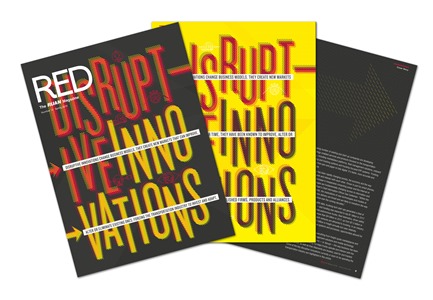Change happens to all of us. It’s not always a bad thing, but it’s also not always easy. In the world of business, companies must make changes and adapt in order to stay relevant. Think about how online streaming companies like Netflix eliminated companies like Blockbuster, how some retailers have permanently shuttered their doors thanks to Amazon and online shopping, how digital photography eliminated the need to develop film and how travel booking websites have reduced the number of travel agents by two-thirds. Online video streaming, the ease and prevalence of internet use, and digital photography can all be considered disruptive innovations.
Disruptive innovations ultimately change business models, create new markets, add value networks and improve or eliminate existing markets, established firms, products and alliances. In the world of trucking, disruptors are in abundance.
“Within the transportation sector, the implications of new technologies and models of transportation service delivery are broad and are likely to transform the way people and goods move over the coming decades,” said Ruan’s Chief Information Officer Dan Greteman.
 Trucking is moving from pen and paper to fully digital. It’s faster, more accurate and saves money. In an industry that hauls more than $700 billion in freight annually but uses relatively outdated and labor-intensive systems and processes, opportunities are endless for innovation. Our latest issue of RED Magazine highlights how legacy modernization, mobile technology, autonomous trucks, electronic trucks and driver monitoring create multiple challenges and opportunities for the transportation industry, as well as how Ruan is currently taking advantage of them to continue to improve our service for customers and the community. Click here to read more.
Trucking is moving from pen and paper to fully digital. It’s faster, more accurate and saves money. In an industry that hauls more than $700 billion in freight annually but uses relatively outdated and labor-intensive systems and processes, opportunities are endless for innovation. Our latest issue of RED Magazine highlights how legacy modernization, mobile technology, autonomous trucks, electronic trucks and driver monitoring create multiple challenges and opportunities for the transportation industry, as well as how Ruan is currently taking advantage of them to continue to improve our service for customers and the community. Click here to read more.
Below are a few examples of ways we are embracing innovative disruptions:
-
Upgraded to R2.0, our best-of-breed transportation management platform.
-
Reserved five Tesla electric trucks.
-
Equipped trucks with driver assistance systems that monitor driver behaviors like hard braking, speeding, following distance and lane departure.
-
Testing 100 road- and driver-facing dash cameras.
It’s clear that the world of trucking looks very different than it did 10 years ago, and the next 10 years will be marked by even more change—the drivers, the transportation management systems, the data and the trucks themselves. Change is inevitable. Click here to learn more about some of the key disruptive innovations currently or soon-to-be upending the transportation industry.